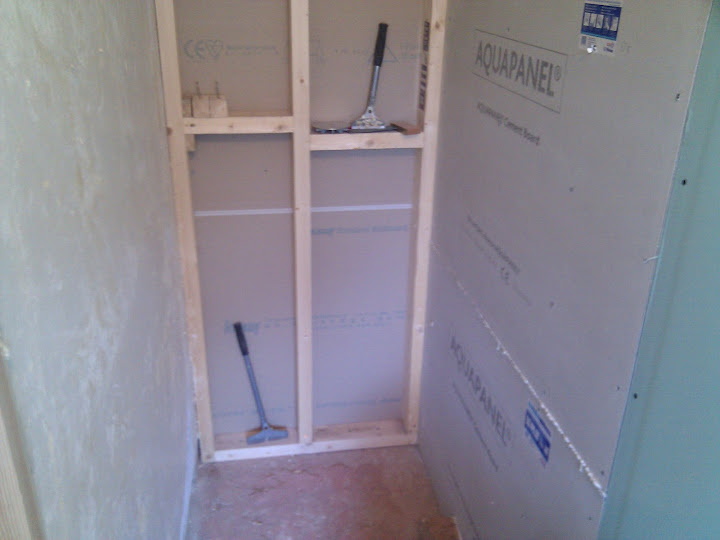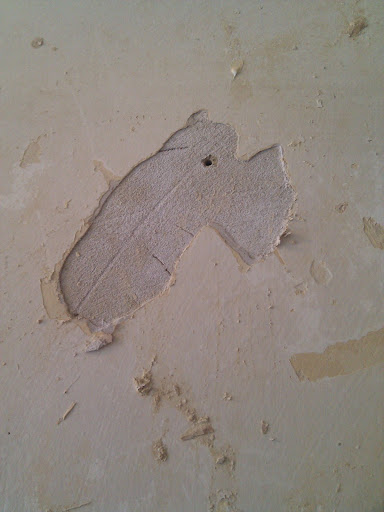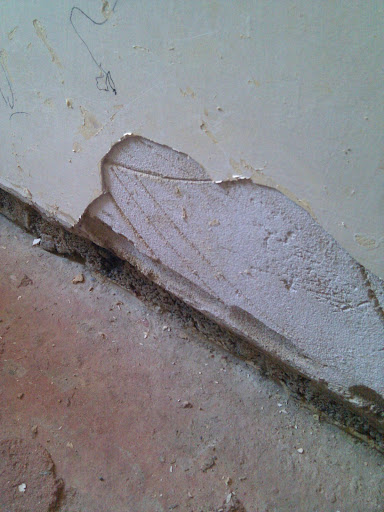Right, lets have another crack at posting photographs!
This is the ensuite, where the shower tray is going to go:

To the left is the cinder block/base plaster/finishing plaster/paint wall.
Directly in front is stud, soon to be covered in Aquapanel.
To the right is Aquapanel.
The wall to the left is the one that I am concerned about, now am I better boarding over it as discussed earlier, or chipping all the finish coat off (and thus taking the paint with it) as it has blown in some areas:

And again at the base of the wall:

If boarding it is the answer will the plasterboard bonding stuff adhere to the painted wall?
This is the ensuite, where the shower tray is going to go:

To the left is the cinder block/base plaster/finishing plaster/paint wall.
Directly in front is stud, soon to be covered in Aquapanel.
To the right is Aquapanel.
The wall to the left is the one that I am concerned about, now am I better boarding over it as discussed earlier, or chipping all the finish coat off (and thus taking the paint with it) as it has blown in some areas:

And again at the base of the wall:

If boarding it is the answer will the plasterboard bonding stuff adhere to the painted wall?

